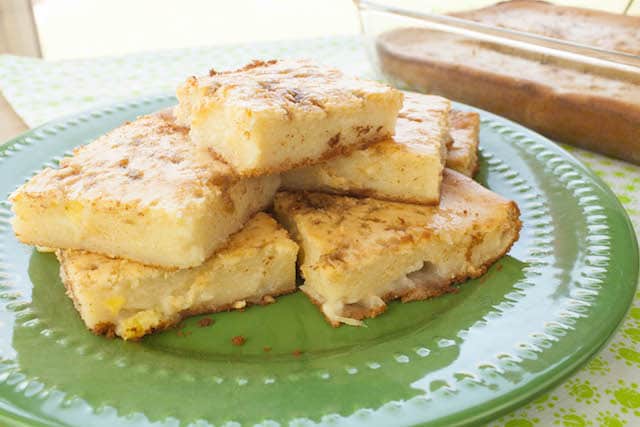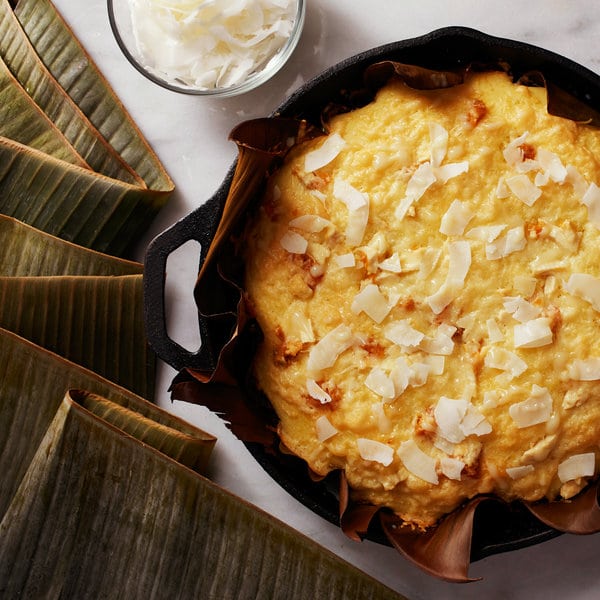Advertisements
Bibingka is a rice cake that’s prepared through baking. It’s mostly eaten in the Philippines although Indonesians also like the Filipino delicacy. Bibingka is mostly eaten for breakfast especially during Christmas time. Traditionally, it’s cooked in clay pots that are lined with some leaves.
This rice cake was originally prepared using a method called galapong which is an ancient method that is unique to the Filipino people. It was also used in the Austronesian regions that are related to the Philippines.
These coconut rice cakes are commonly taken as desserts and unlike in many other Asian countries for Bibingka, the rice is never prepared dry. Instead, the Filipinos soak it overnight in jars they call tapayan and “bubod,” a wild yeast is added to it so that it ferments. Alternatively, a palm wine can be used.
After this, a thick paste is made by grinding the rice using stone mills then the rice is cooked. This gives the rice cakes a sour aftertaste. When this process is prolonged, the result will be either a traditional vinegar or wine.

The story of bibingka
The Filipino people are known to be very religious with most of them being catholic. This is because the Spanish Catholics had a big influence on them and generally their culture. Filipinos have a lot of devotion when it comes to their religion and as such, they they attend several special masses. After these masses, a lot of vendors can be found outside selling a variety of local delicacies including the bibingka which is the most preferred although other dishes include the suman, puto bumbong, barquillos and many others.
The name bibingka is almost similar to “bebinca” which is an Indian dessert from Goa made from coconut milk, flour, sugar, ghee, egg yolks, some clarified butter and almonds too. For both of these cakes, the cooking is done using heat placed both on top and the bottom.
That said, the term bibingka is of Chinese origin . According to E. Arsenio Manuel, an Anthropologist, the cake’s name is related to its root word “bi” which means an unripe grain. Bibingka is also used to name other different types of rice cakes. Examples in such cases include bibingkang malagkit and bibingkang cassava.
Traditionally, this cake is best baked on live coals placed in a clay oven. However, if you do not have a clay oven you can make it using a regular one.
Bibinka may incorporate some native white cheese toppings, some sliced salted duck eggs and many people serve it with either margarine or butter and grated coconut. Sometimes, sugar is included
These rice cakes are best served hot and usually have a soft and very spongy texture. Some Filipinos prefer to eat them with Kapeng Barako which is a strong variety of coffee.

Health benefits of bibingka
Since coconut is full of health benefits, the bibingka is full of those too. It comes in handy if you’re keen on protection from any heart diseases or would like to protect yourself from tooth decay. According to experts, bibingka reduces your chances of getting heart disease by increasing the amount of good cholesterol in your body and decreasing the bad type.
It also helps in treating malnutrition, slowing down the effects of diabetes, preventing strokes and certain brain disorders including Alzheimer’s and also Parkinson’s. It boosts your metabolism and increases your energy levels too.
The Bibinka is certainly worth a try. It’s not only a tasty Filipino coconut rice cake, but is also full of health benefits.
Advertisements
